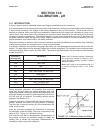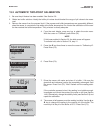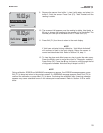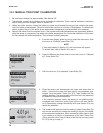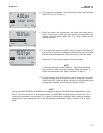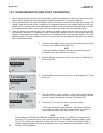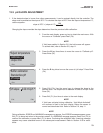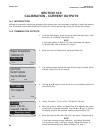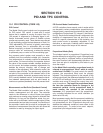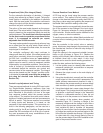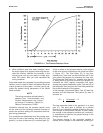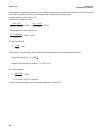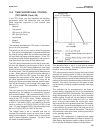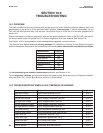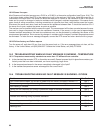
81
MODEL 54eA SECTION 15.0
PID AND TPC CONTROL
SECTION 15.0
PID AND TPC CONTROL
15.1 PID CONTROL (CODE -20)
PID Control
The Model 54eA current outputs can be programmed
for PID control. PID control is used with a control
device that is capable of varying its output from 0 to
100 percent in response to a changing signal in mil-
liamps. Automated control valves or variable volume
pumps are commonly used. These devices are referred
to as modulating control devices because of their 0 to
100% adjustability. PID control is typically used where
greater accuracy than is achievable with an on/off
device is required, or where it is desirable to have the
pump or valve "on" continuously, or where the existing
or preferred pump or valve is of the modulating type.
Any process control system must manually or auto-
matically hold the controlled variable (pH, concentra-
tion, temperature) in a steady condition at selected set
point values. For manual control, the operator looks at
the value of the process variable, decides whether or
not it is correct, and makes necessary adjustments. He
decides the amount, direction, rate of change and
duration of the adjustment. With automatic control, the
controller does all of this. The operator only adjusts the
set point of the controller to the selected value of the
measured variable. Automatic process control such as
PID is usually feedback control; it eliminates the devia-
tion between measurement and set point based on
continuous updates (feedback) from the process itself.
Measurement and Set Point (Feedback Control)
The Model 54eA controller is given two items of infor-
mation: measurement and set point. The controller
reacts to the difference in value of these two signals
and produces an analog output signal to eliminate that
difference. As long as the difference exists, the con-
troller will try to eliminate it with the output signal. When
measurement and set point are equal, the condition of
the controller is static and its output is unchanged. Any
deviation of measurement from set point will cause the
controller to react by changing its output signal.
PID Control Mode Combinations
All PID controllers have several control modes which
can be used in various combinations: proportional plus
integral (reset), proportional plus derivative (rate) and a
combination of proportional (P), integral (I) and deriva-
tive (D). Each control mode produces a response to the
deviation of measurement from set point that is the
result of a specific characteristic of the deviation, and
each control mode is separately adjustable. D, the
derivative, or rate mode, is seldom used in water treat-
ment and is beyond the scope of this manual.
Proportional Mode (Gain)
The simplest control is proportional. Proportional may
also be referred to as sensitivity or gain. Although these
terms may refer to a different version of proportional,
the control function is still fundamentally the same - the
error from set point is multiplied by this factor to pro-
duce the output.
In the Model 54eA controller, proportional mode is
referred to as proportional "band" which is config-
urable from 0 to 299%. For good control of a specific
process, the proportional band must be properly
adjusted. The proportional band is the percent of the
analog output span (the difference between the 4 (or 0)
mA and 20 mA settings) through which the measured
variable must move to change the output from mini-
mum to maximum. The larger the proportional band,
the less the controller reacts to changes in the
measured variable. As the proportional band is
made smaller, the reaction of the controller
increases. At 0 proportional band, the proportional-
only controller behaves like an on/off controller (an
alarm set at 20 mA).
Most processes require that the measured variable be
held at the set point. The proportional mode alone will
not automatically do this. Proportional alone will only
stabilize the measured variable at some offset to the
actual control point. To control at an exact setpoint,
proportional plus integral mode is used.



